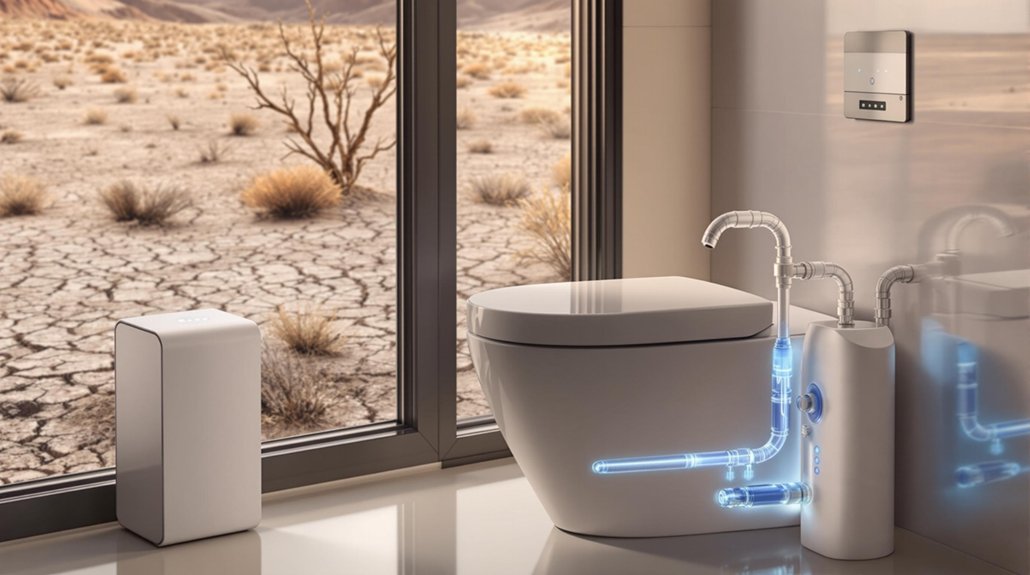Western states are turning to wastewater recycling as a drought solution. While Nevada recycles 85% of its water, California only reuses 22% despite severe shortages. The Bipartisan Infrastructure Law provides $50 billion to improve wastewater systems. On-site recycling technologies from companies like Epic Cleantec offer decentralized solutions for urban areas. Implementing these systems could add 1.3 million acre-feet annually to water supplies. Public education remains essential to overcome misconceptions about this untapped resource.
As drought tightens its grip on the Western United States, innovative toilet water recycling technologies are emerging as a practical solution to growing water scarcity. The Colorado River Basin alone faces a projected annual water shortage of 2-4 million acre-feet, while the seven Western states relying on this vital water source currently recycle only 25% of their water supply.
Nevada leads the region in water reuse with an impressive 85% recycling rate, followed by Arizona at 52%. Other Western states lag behind considerably despite facing similar water challenges. California manages to recycle only 22% of wastewater despite having significant infrastructure capacity. With rapid population growth in arid regions like California and Texas, the need for alternative water sources has never been more urgent.
Companies like Epic Cleantec are developing high-rise treatment facilities that recycle water on-site, reducing dependency on traditional water systems. These compact, decentralized systems are gaining popularity in urban environments where space is limited but water demands are high.
Modern purification techniques effectively remove harmful substances from wastewater, though minerals must be reintroduced before consumption to prevent negative health impacts. Treatment protocols guarantee recycled water quality matches or exceeds traditional potable water standards. Understanding the storage challenges associated with renewable resources has helped engineers develop more efficient water recycling systems that can operate consistently regardless of weather conditions.
The federal government is supporting these efforts through the Bipartisan Infrastructure Law, which allocates $50 billion to enhance wastewater and stormwater systems across the country. Regulatory frameworks increasingly support the use of treated wastewater in agricultural and industrial applications.
If implemented widely across Western states, recycling wastewater could add 1.3 million acre-feet annually to available water supplies. Treated wastewater can substitute freshwater for non-drinking uses like irrigation and toilet flushing, reducing strain on freshwater sources.
Despite these benefits, adoption faces challenges including high costs, technical complexity, and public misconceptions about safety. States lack uniform federal guidance for water recycling standards, leading to inconsistent regulations across the region. Education campaigns are necessary to build trust in recycled water systems.
As groundwater depletion continues even in less arid regions of the U.S., water recycling innovations offer a sustainable path forward, enabling urban centers to achieve greater self-sufficiency while maintaining ecological balance in drought-stricken areas.








